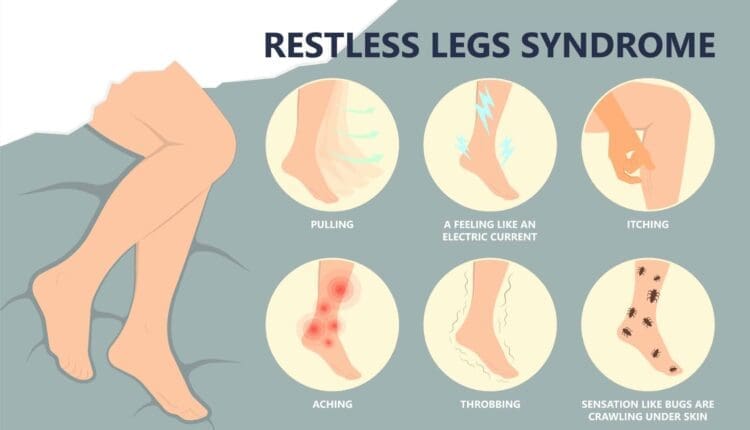GI Disorders Treatment: Seeking the Best Solutions
Discover key insights into GI disorders treatment to help manage symptoms and improve gastrointestinal health.
Introduction
Do you often feel bloated after meals? Experience persistent constipation or digestive discomfort? Or perhaps you suffer from joint stiffness and muscle pain with no clear cause? Many people are unaware that their gut health can significantly impact their musculoskeletal system. Emerging research highlights the intricate connection between gastrointestinal (GI) health and musculoskeletal function, showing that poor gut health can contribute to systemic inflammation, nutrient deficiencies, and chronic pain.
As a nurse practitioner specializing in physical and functional medicine, I have seen firsthand how addressing gut health can lead to profound improvements in musculoskeletal function and overall well-being. This article explores the gut-musculoskeletal connection and evidence-based, non-surgical strategies to alleviate pain and restore balance.
The Gut-Musculoskeletal Connection: How GI Disorders Impact the Body
1. Systemic Inflammation and Musculoskeletal Pain
Inflammation is a key player in both GI disorders and musculoskeletal conditions. When gut health is compromised—due to factors such as poor diet, stress, or dysbiosis—the body mounts an immune response, leading to chronic inflammation.
GI disorders like irritable bowel syndrome (IBS), gastroesophageal reflux disease (GERD), and small intestinal bacterial overgrowth (SIBO) are commonly associated with systemic inflammation. Research has shown that inflammatory mediators released from the gut can trigger widespread pain and contribute to conditions like fibromyalgia, arthritis, and chronic fatigue syndrome (Casini et al., 2024).
2. Nutrient Malabsorption and Musculoskeletal Dysfunction
The gut is responsible for absorbing essential nutrients that support musculoskeletal health. Celiac disease, inflammatory bowel disease (IBD), and chronic diarrhea can impair nutrient absorption, leading to deficiencies in:
- Vitamin D (essential for bone health and immune regulation)
- Magnesium (necessary for muscle relaxation and nerve function)
- B Vitamins (important for energy metabolism and nervous system function)
- Omega-3 Fatty Acids (anti-inflammatory properties)
Deficiencies in these nutrients can manifest as muscle cramps, weakness, joint pain, and fatigue, often mimicking other musculoskeletal disorders.
3. Gut Dysbiosis and the Nervous System
The gut, often referred to as the “second brain,” has a profound relationship with the nervous system. Gut dysbiosis, or an imbalance in gut bacteria, can lead to increased intestinal permeability (leaky gut), allowing toxins and inflammatory molecules to enter the bloodstream. This, in turn, can trigger immune responses that contribute to chronic pain, joint stiffness, and muscle dysfunction (Casini et al., 2024).
Additionally, the gut-brain axis plays a significant role in pain perception. When gut health is compromised, it can disrupt neurotransmitter production (such as serotonin and dopamine), leading to increased pain sensitivity and mood disorders like anxiety and depression.
4. Visceral-Somatic Reflex and Referred Pain
GI disorders often create referred pain patterns, where discomfort originating in the gut is perceived as musculoskeletal pain.
- GERD may cause chest and upper back pain.
- IBS can lead to lower back and pelvic discomfort.
- Chronic constipation can contribute to hip and sacroiliac joint pain.
This phenomenon, known as the visceral-somatic reflex, occurs when irritation in the internal organs triggers nerve responses that are felt in corresponding musculoskeletal structures (Farmer & Aziz, 2009).
Fighting Inflammation Naturally: Video
Functional and Non-Surgical Approaches to Restoring Gut and Musculoskeletal Health
1. Dietary Modifications for Gut Health
Optimizing gut health begins with nutrient-dense, anti-inflammatory dietary choices. Some effective dietary approaches include:
- Anti-Inflammatory Diet: Emphasizes whole foods, omega-3s, and antioxidants.
- Elimination Diet: Identifies and removes food sensitivities that trigger inflammation.
- Low FODMAP Diet: Reduces fermentable carbohydrates that can cause bloating and gut distress.
A well-balanced diet supports gut microbiome diversity, reduces systemic inflammation, and promotes nutrient absorption (El-Salhy, 2019).
2. Probiotics and Prebiotics for Gut Microbiome Support
Restoring gut microbiome balance is crucial for reducing inflammation and improving digestion.
- Probiotics: Contain beneficial bacteria that support gut integrity and immune function.
- Prebiotics: Fiber-rich foods that nourish beneficial gut bacteria.
Studies show that probiotics and prebiotics help modulate the immune system, restore gut barrier function, and reduce pain associated with GI disorders (Roy & Dhaneshwar, 2023).
3. Stress Management for Gut-Musculoskeletal Health
Chronic stress exacerbates GI dysfunction and musculoskeletal pain. Incorporating stress-reducing techniques can significantly improve both systems:
- Mindfulness & Meditation: Reduces gut sensitivity and pain perception.
- Cognitive Behavioral Therapy (CBT): Helps manage stress-induced GI symptoms.
- Breathwork & Yoga: Improves vagal nerve function, aiding digestion and relaxation.
4. Manual Therapies for Musculoskeletal and Gut Health
Various hands-on therapies can alleviate both GI and musculoskeletal symptoms:
- Osteopathic Manipulative Therapy (OMT): Improves gut motility and reduces referred pain.
- Visceral Manipulation: Releases abdominal restrictions to improve digestion.
- Massage Therapy: Alleviates stress-related gut dysfunction and musculoskeletal tension.
5. Acupuncture for Gut and Pain Management
Acupuncture is an evidence-based approach that can modulate the autonomic nervous system, reduce inflammation, and improve gut motility. Studies show that acupuncture helps relieve IBS-related pain, bloating, and constipation(Li et al., 2023)
Conclusion: A Holistic Approach to Gut and Musculoskeletal Health
The connection between GI health and musculoskeletal function is undeniable. Chronic pain, joint stiffness, and muscle dysfunction often stem from underlying gut issues, making an integrative approach essential for effective treatment.
By incorporating functional medicine strategies such as dietary modifications, gut microbiome support, stress reduction, manual therapies, and acupuncture, individuals can address the root causes of dysfunction rather than just treating symptoms. These holistic, non-surgical interventions empower patients to take control of their health, reduce chronic pain, and achieve lasting well-being.
As a nurse practitioner specializing in physical and functional medicine, my goal is to help individuals restore balance to their gut and musculoskeletal systems. If you’re experiencing persistent pain, digestive issues, or unexplained musculoskeletal discomfort, it’s time to explore a functional medicine approach tailored to your needs.
Injury Medical & Functional Medicine Clinic
We associate with certified medical providers who understand the importance of the effects of GI disorders on not only the gut system but also the musculoskeletal system. While asking important questions to our associated medical providers, we advise patients to implement small changes like physical activities and small dietary changes to their diet to reduce the chances of GI disorders from returning. Dr. Alex Jimenez, D.C., envisions this information as an academic service. Disclaimer.
References
Casini, I., Massai, L., Solomita, E., Ortenzi, K., Pieretti, S., & Aloisi, A. M. (2024). Gastrointestinal Conditions Affect Chronic Pain and Quality of Life in Women. Int J Environ Res Public Health, 21(11). https://doi.org/10.3390/ijerph21111435
El-Salhy, M. (2019). Nutritional Management of Gastrointestinal Diseases and Disorders. Nutrients, 11(12). https://doi.org/10.3390/nu11123013
Farmer, A. D., & Aziz, Q. (2009). Visceral pain hypersensitivity in functional gastrointestinal disorders. Br Med Bull, 91, 123-136. https://doi.org/10.1093/bmb/ldp026
Konturek, P. C., Brzozowski, T., & Konturek, S. J. (2011). Stress and the gut: pathophysiology, clinical consequences, diagnostic approach and treatment options. J Physiol Pharmacol, 62(6), 591-599. https://www.ncbi.nlm.nih.gov/pubmed/22314561
Li, X., Liu, S., Liu, H., & Zhu, J. J. (2023). Acupuncture for gastrointestinal diseases. Anat Rec (Hoboken), 306(12), 2997-3005. https://doi.org/10.1002/ar.24871
Malone, M., Waheed, A., & Samiullah, S. (2018). Functional Gastrointestinal Disorders: Functional Lower Gastrointestinal Disorders in Adults. FP Essent, 466, 21-28. https://www.ncbi.nlm.nih.gov/pubmed/29528206
Roy, S., & Dhaneshwar, S. (2023). Role of prebiotics, probiotics, and synbiotics in management of inflammatory bowel disease: Current perspectives. World J Gastroenterol, 29(14), 2078-2100. https://doi.org/10.3748/wjg.v29.i14.2078





